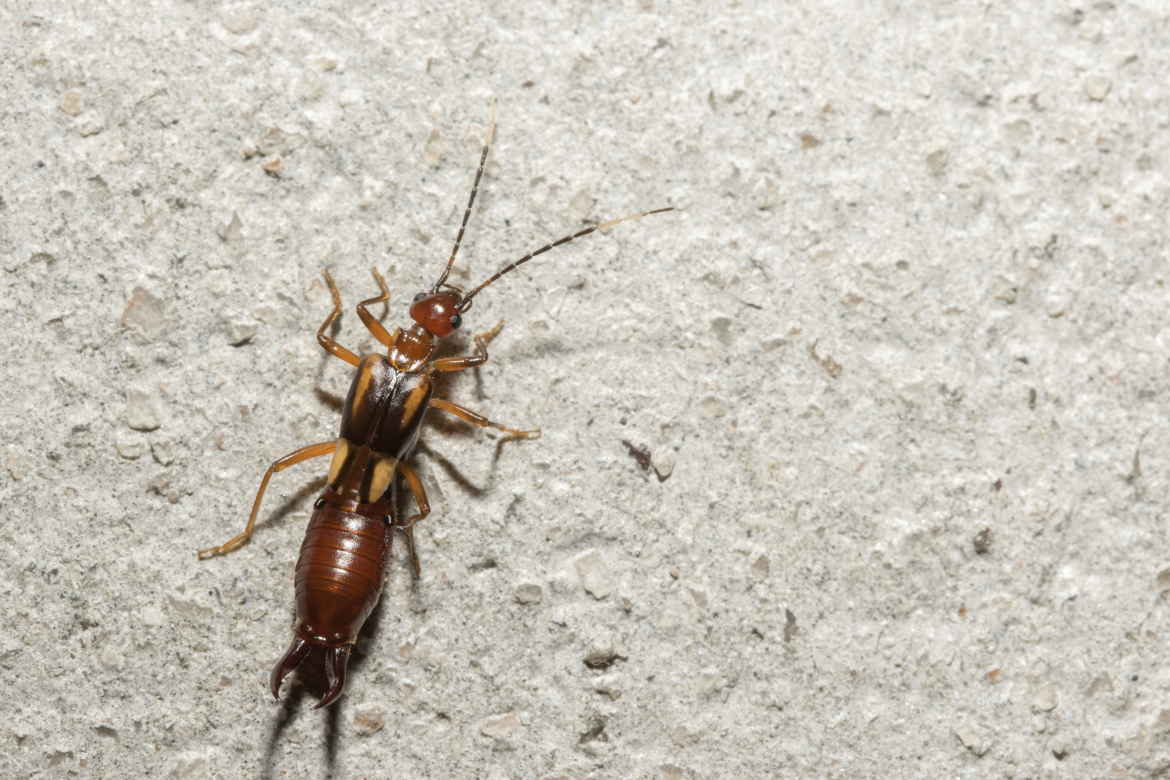Earwigs are easily recognizable by their pincers (forceps harmless to humans) at the ends of their abdomen. They are dark reddish-brown, with light brown legs, and are about 5/8 inch long.
The Biology of an Earwig
In a season, females reproduce up to 20-60 eggs laid in burrows (called chambers) about 2 to 3 inches beneath the soil. Most species have one generation a year, over-wintering in the soil. Both adults and the young require moisture to live.
Their Habits
- Earwigs are primarily nocturnal, feeding at night. They are scavengers, eating primarily dead insects and decomposing plant materials.
- Some earwig species are attracted to lights.
- During the day, earwigs will seek shelter under organic matter such as mulch, pine straw, leaf litter, and other debris. Earwigs prefer dark and damp areas like under sidewalks, and stones.
- Earwigs eat live plants and can do damage to field crops.
- Earwigs are found in homes and can get in through entry points like doors and windows, and by going up the foundation.
- Their populations build up around foundations. Earwigs produce large populations rather quickly and are often a major problem in new subdivisions.
- Earwigs live in habitats that also harbor centipedes, sow bugs (roly-poly), and millipedes.
Prevention
- Because earwigs are attracted to moisture it is important to eliminate high moisture areas. Earwigs may be present, although invisible during the day around foundations, in mulch, under stones, boards, etc.
- Look for ways to eliminate damp moist conditions particularly around crawl spaces, faucets, and along with the foundations.
- Rain gutters and spouts should direct water away from the house foundation.
- Caulk or use weather stripping at all possible entry points such as doors, windows, pipes and other entry points at the ground level
- Change landscaping by creating a clean, dry border immediately around the foundation wall. Gravel or ornamental stones can make an attractive barrier against earwigs and other pest invaders.


